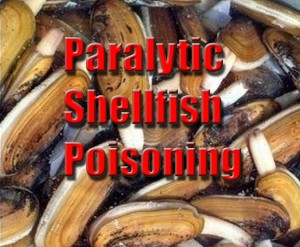 ANCHORAGE — A probable case of paralytic shellfish poisoning over the weekend has prompted the Alaska Department of Health and Social Services, Section of Epidemiology, to remind Alaskans and visitors alike of the ever-present risk of paralytic shellfish poisoning, or PSP, in recreationally-harvested Alaska shellfish.
ANCHORAGE — A probable case of paralytic shellfish poisoning over the weekend has prompted the Alaska Department of Health and Social Services, Section of Epidemiology, to remind Alaskans and visitors alike of the ever-present risk of paralytic shellfish poisoning, or PSP, in recreationally-harvested Alaska shellfish.
All locally harvested shellfish — including clams, mussels, oysters, geoducks and scallops — can contain paralytic shellfish poison. Crabmeat is not known to contain the PSP toxin, but crab guts can contain unsafe levels of toxin and should be discarded.
The current case involves razor and possibly butter clams harvested from Clam Gulch on June 15, about 1.5 miles down the beach near the big tower. The patient began experiencing typical symptoms of PSP approximately four hours after ingesting the shellfish.
Early signs of poisoning often include tingling of the lips and tongue. Symptoms may progress to tingling of fingers and toes, then loss of control of arms and legs, followed by difficulty breathing. Death can result in as little as two hours.
Although clam diggers often look for signs of a “red tide,” there is no way to tell if a beach is safe for harvesting simply by looking at it. The toxins that cause PSP can be present in large amounts even if the water looks clear. Also, the toxin can remain in shellfish long after the algae bloom is gone.
PSP cannot be cooked, cleaned or frozen out of shellfish. Commercially grown shellfish is tested and considered safe.
Paralytic shellfish poisoning is considered a public health emergency. Suspected cases must be reported immediately to the Section of Epidemiology by health care providers at 907-269-8000 during work hours or 800-478-0084 after hours.
For more information on PSP go to:
https://www.cdc.gov/nczved/divisions/dfbmd/diseases/marine_toxins/, or https://www.epi.hss.state.ak.us/id/dod/psp/default.htm
